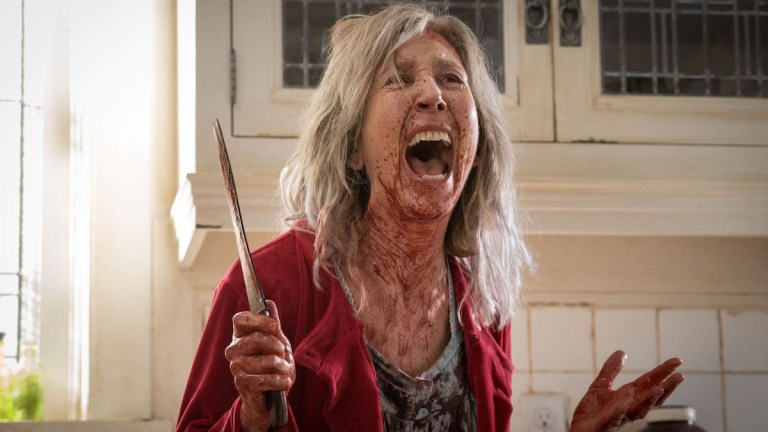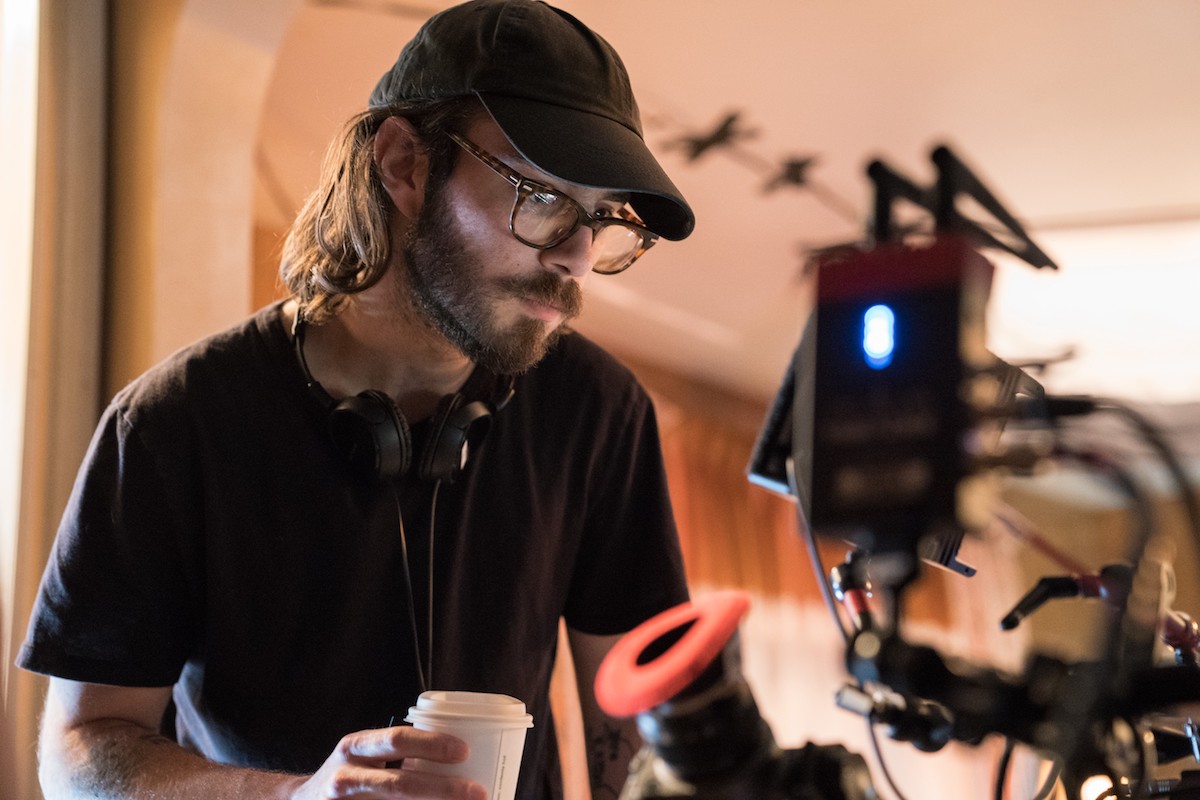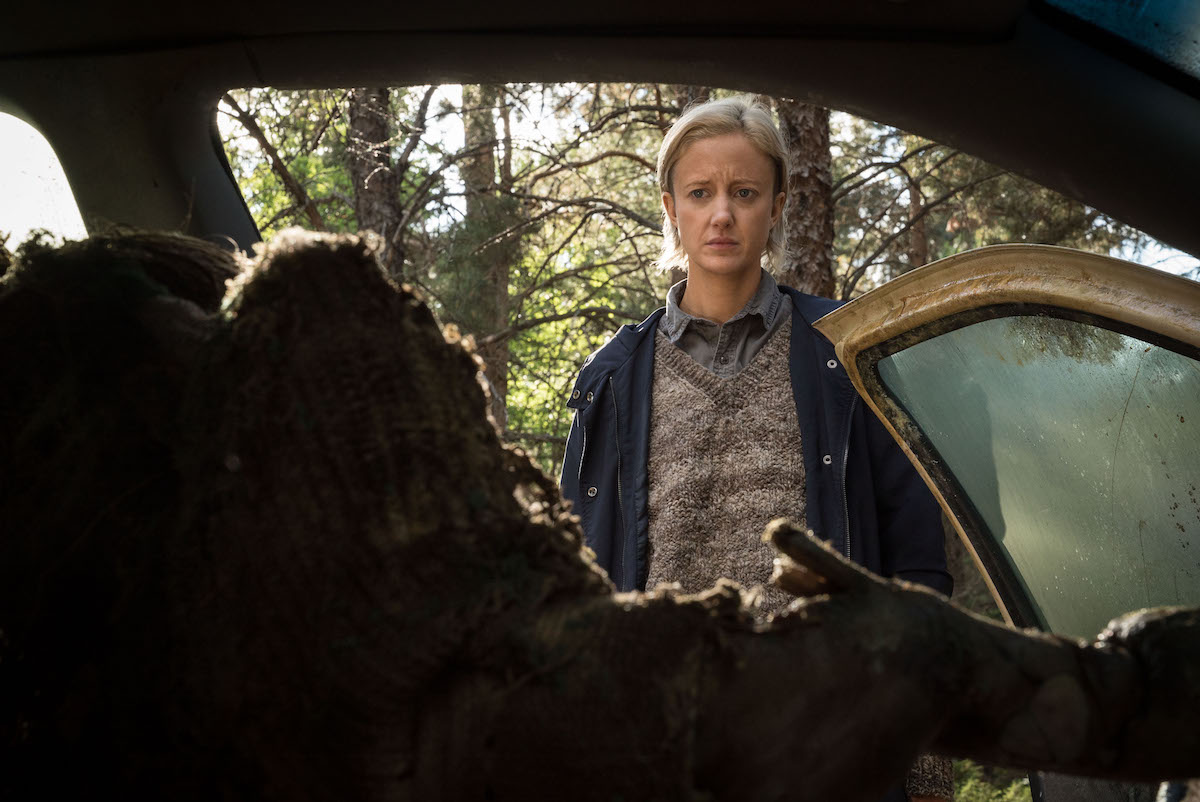On set of The Grudge remake
In the spring of 2018, we headed to Canada to see how the new, American take on the Grudge horror franchise was getting on...

“Wait, they’re remaking The Grudge… again?” an airport security guy asked as we landed in Winnipeg, Canada in the spring of 2018.
Well, we have to admit, we were a bit sceptical about another version of the horror franchise – particularly an entry made without the input of its creator, Takashi Shimizu, and one that jettisons much of the Japanese supernatural mythology that underpinned the series from the very beginning.
And yet, for reasons we’ll get into shortly, The Grudge doesn’t appear to be just another quick, anything-for-a-buck movie designed to cash in on a familiar name. Let’s face it, The Grudge was never really a conventional horror franchise to begin with; it began back in the late ’90s as a pair of short films directed by Shimizu, who then expanded the concept into a feature, Ju-On, in 2000. Japanese sequels followed, and Shimizu himself directed the English-language remake, starring Sarah Michelle Gellar, in 2004. That movie itself spawned two sequels, and its central ghost, Kayako, even got a kind of Freddy Vs Jason spin-off with Sadako Vs Kayako in 2016.
The new Grudge, out at the end of January, takes certain narrative slivers from previous entries: the non-linear structure, which sees the story jump back and forth in time and between multiple groups of characters; similar themes of illness, care-giving, parenthood and gnawing guilt. Writer-director Nick Pesce demonstrated an eye-catching knack for unconventional structures and nightmare images in his indie-horror debut, The Eyes Of My Mother, a black-and-white fever dream of a film that received a fair bit of praise when it made its debut at Sundance in 2016.
It was Pesce’s clear talent as a young filmmaker (he’s still a bushy-tailed 28 year-old when we meet him in 2018), and Pesce’s enthusiasm for The Grudge, in turn, helped drag the series out of its own circle of development hell – producers had been trying to get a new movie made for about seven years but never quite got it going. Pesce’s growing reputation as a smart genre film director, meanwhile, has helped attract an enviable cast to his intimate horror movie.
In here you’ll find Andrea Riseborough (Birdman, Oblivion) as Detective Muldoon, a weary cop who retreats to a fictional American town – North Hampshire – in the hope of a quiet life. Needless to say, she doesn’t get it. There’s also Jacki Weaver, who won an Oscar for her chilling turn as the terrifying matriarch in Animal Kingdom; Demián Bichir, who plays another rumpled cop; horror icon Lin Shaye as Faith, an elderly woman suffering from dementia, and Frankie Faison (The Wire, The Silence Of The Lambs) as her husband.
The thread uniting all these characters? A vengeful, demonic force that haunts houses, but also spreads from place to place like a creeping virus. All of this, at any rate, explains why we’re sitting in a run-down looking double garage in the middle of Winnipeg, Canada. We’re well into the spring, but several days of storms have left the air feeling dank and cool – the perfect atmospheric backdrop, we suppose, for the filming of a modern gothic horror movie. The location Pesce has chosen for his current leg of filming (at the time of our visit, The Grudge is midway through its 36-day shoot) is a rambling 19th century house that looks a little like something Norman Bates used to frequent.
The architectural style is described as American Craftsman: the ceilings are high, the staircases are grand and sweeping, and the walls are panelled with wood. Located on Wellington Street, Wisconsin, the house was clearly an oasis of luxury in its heyday; built in 1908 for a wealthy meat packing baron, it has 16 bedrooms, a ballroom, and a big stained-glass window in the middle of the staircase that carries a coat of arms.
But like many of the characters in The Grudge, time has caught up with the house on Wellington street, and its ravages can be spotted everywhere: the kitchen hasn’t been updated in years, paint and wallpaper are peeling, and parts of the structure are beginning to sag. The local word is that its current owner wants to knock the old pile down and build some luxury condominiums; needless to say, there’s a petition underway to save the place. Before the bulldozers move in, though, the house is getting its final curtain call: the non-human star in The Grudge.
Its interiors, carefully modified by the production’s designers and crew, will play the role of the Matheson residence – the increasingly dilapidated home of ageing couple Faith (Shaye) and William (Faison). Through the course of the film, we’ll see the place become increasingly degraded – much like its residents, who may or may not be succumbing to the influence of a malevolent ghost.
Away from the set – a kitchen and living room strewn with books, playing cards and queasily-realistic bowls of uneaten food – the rest of the house is a warren of temporary production headquarters. In the basement, we found craft services (sandwiches, coffee, muffins and so forth); outside in the yard, assorted tents full of equipment; the somewhat weed-strewn garden played host to the catering tent.
Seated in the garage on little black folding chairs, we watch the day’s filming unfold on a monitor. The scene amounts to only a few lines in the script – Andrea Riseborough’s detective enters the devastated Matheson residence, and finds a desperately starving and ill Lin Shaye alone in the kitchen, murmuring to herself.
Clearly, something dreadfully unpleasant has happened here, and Detective Muldoon, spider-senses twitching, knows it. What’s noteworthy is how deliberately naturally the scene is allowed to unwind. The lighting is moody and filled with negative space – David Fincher’s Seven and Fight Club are cited as influences by Ryan Wuckert, the digital imaging technician we find colour-correcting footage in a little black tent late in the afternoon. The Fincher influence certainly shows in its heavy use of shadows and palette of muted greens and yellows. Appropriately, it’s a queasy, almost ill-looking movie, dripping with grime and greasy unease.
* * *

When functioning at the more extreme peripheries of jetlag, watching multiple takes of the same scene can take on woozy, surreal hue. Over and again, Andrea Riseborough’s detective walks into that same horrible kitchen, yet always with the same look of suspicion and repulsion, as though she’s just laid eyes on the place for the first time. Like a recurring nightmare, the takes are almost the same, but not quite; Riseborough experiments with different inflections in her dialogue; in later takes, she says a fair bit more than is in the script (“Ma’am, is there anyone else home with you right now?”).
As Faith, meanwhile, Lin Shaye experiments quite a bit more. The end of the scene sees Detective Muldoon confronted with Faith’s horribly disfigured hand, and then rush out of the room “to get help”; Faith’s response is to wail, “No! Don’t leave me!” Well, that’s what Shaye does in some takes, at any rate.
In others, she screams and gibbers almost nonsensically. In others, her plea is quieter, more childlike and plaintive. In one, Shaye improvises a sort of half-mumbled monologue, presumably to her absent husband, about cooking a nice chicken dinner. It’s oddly disquieting to sit through these varied cries of anguish. Even though part of us knows it’s all just very good acting, there’s an ancient synapse in the brain that’s hard-wired to respond.
After a few hours of all this, we begin to wonder how Lin Shaye copes with the exertion of acting out so much psychic pain; surely, we think, it must be emotionally exhausting. When we put the question to Shaye herself later in the day, something unexpected happens: tears suddenly stream down her face. The emotions, it seems, are so raw, so close to the surface, that she can’t help but react.
“It is difficult. It is draining,” Shaye says, between tears. “It’s a good thing I’m an actress, because there’s no other job for me. I mean, I really feel that way. But it is taxing, because your body doesn’t know you’re pretending; this is something else I’ve talked about a lot. It’s kind of fascinating, because you can work yourself up to an emotional pitch, and you sweat and you get smelly, all your hormones are going… I put it down to my mom and dad. If I’m any good as an actress, it’s partly their fault. They allowed me to be myself and express my feelings without judging me.”
If there’s a uniting theme among the actors we speak to in the Wellington Street garage, it’s that all of them are driving for some kind of human reality in their performances.
Or, as Jacki Weaver puts it, “It’s nice to have a frightening film that has a bit of intellectual depth to it. The characters actually have substance and an arc; they’re not just surface characters for the purpose of gore. And I think that’s what makes it more frightening. They’re people you can relate to, instead of daffy blondes who run into garages where there are people with chainsaws.”
“Nicolas Pesce has a surrealist approach to horror that is tremendously human,” concurs Lin Shaye. “But it’s couched in violence, which is a different kind of horror.”
“Lots of filmmakers have the technology to do the quote-unquote scary stuff,” says Frankie Faison, putting it another way. “But if they have a good story to go along with it, then I think you have a much better balance.”
Andrea Riseborough, perhaps the film’s biggest rising star, puts it in the most ominous way of all.
“I think it’s very human,” Riseborough says of the horror in Pesce’s Grudge. “I think it’s really about whatever the hopeless place that you have inside of yourself is. It goes really deep into that part of our makeup. It’s the opposite of hope.”

Put all this together, and we’re beginning to get the distinct impression that the new Grudge won’t be a simple, jumpy ghost train ride, but something far more weird and button-pushing. Faison’s keen to point out the sense of reality he and Shaye are putting into their on-screen relationship, and how it’s affected by the onset of dementia. In another of the day’s more emotional moments, Faison describes how his own father succumbed to the illness.
“If you don’t know anything about [dementia] or you haven’t been exposed to it, it can be very scary,” Faison says. “But it can be funny in a lot of ways, because they revert back to how they were as a child. I remember going to see my father, and I said, ‘Pop, how you doing?’ And he said, ‘I used to know somebody who looked like you.’ I thought he was joking, but he wasn’t joking. He was as serious as anything.”
Having met director Nick Pesce, it’s a little hard to square this slim, impish filmmaker with the heavy themes and surrealistically violent content of his movies. He seems casual, fidgety, as though he’s levitating a few millimetres above his chair. With his facial hair and glasses, he looks a little like George Lucas – circa American Graffiti, a few years before Star Wars set in.
Pesce’s love of horror is clear, and he’s evidently keen to follow in the footsteps of older, weightier genre movies like Rosemary’s Baby or The Exorcist than, say, an Insidious sequel. And as proof of his horror geek credentials, Pesce reveals that the Faith Matheson’s surname is a homage to Richard Matheson, the American author who did so much for contemporary horror.
“He’s one of my favourite horror writers,” Pesce says. “And what he does that fascinates me is, [his stories] are character-driven, first and foremost. It’s less about a tonne of big ‘Boo!’ type scares, and more about the cultivation of an uncomfortable, uneasy environment and mood. It comes off the page. You’ll see throughout the film there’s a lot of Easter eggs that I’m a fan of. I’m a big fanboy of the whole [horror genre], so I like to throw all that stuff in.”
Pesce also cites David Lynch as an example of the tone he’s going for: his Grudge will, he says, be modelled after “his own brand of strangeness.”
As for his cheerful demeanour, well, don’t let it fool you.
“I like that we can be all smiles on set,” Pesce says, “but then the final product is something that prevents people from sleeping at night.”
Nor is Pesce alone in his quest to make something weird and unholy. Like some kind of demented magician, special effects supervisor Toby Lindala enters the garage with a two-foot-square cardboard box, from which he begins to pull all kinds of abominations: animatronic heads with glazed eyes like a week-old fish, mouths distended ghoulishly. There are other body parts and things too, wrapped up in plastic and surrounded by foam chippings, that we won’t describe in too much detail here.
“They’re not just scary things covered in gore, right?” Lindala says, talking cheerfully about his monstrous creations. “You can relate to it. There’s a tragedy to the design. There’s heavy sadness. They’re relatable.”
With its American setting, The Grudge is therefore cut loose from its ties to Japanese mythology and the long-haired beings that were a highlight of the original Ju-On. All the same, the spooks in Pesce’s Grudge are fearsome-looking things, and we get the impression that, in terms of gore and scenes of graphic injury, this movie will be closer in style to Pesce’s own Eyes Of My Mother than Shimizu’s J-horror. As for the rating, don’t expect anything softer than an R, confirmed executive producer Schuyler Weiss.
Later, we’re given a brief tour of the Matheson house while the cast and crew go on a lunch break. It’s a weird, faded-beauty kind of a place, where early-20th century opulence suddenly gives way to evidence of rising damp or a horribly outdated bathroom. We’re far from superstitious, but we can see why Grudge’s location scouts chose this location; the weight of the decades can be felt here.
Heading up into the attic, where a shaft of light cuts through the murk from an unrepaired hole in the roof, and we can imagine a ghost dragging its chains along the dusty, bare floor. In fact, a publicist tells us that the room felt so atmospheric that Pesce’s crew simply moved in and started filming in it, no set dressing required.
The crew have a few more days at the Wellington house before they head off to film at another location. Precious little of the film, we’re told, will be shot on sound stages – all but two days of the shoot will be in places dotted around Winnipeg.
As we leave the house towards the end of the day’s filming, we’re left surprised by how much we’re looking forward to seeing what Pesce emerges with. As the sun sets and we head back to the bus, the blood-curdling sounds of Lin Shaye’s screams still ring in our ears. The old house’s days may well be numbered, but Shaye gave the place one hell of a send-off.
The Grudge opens in UK cinemas on 24 January.